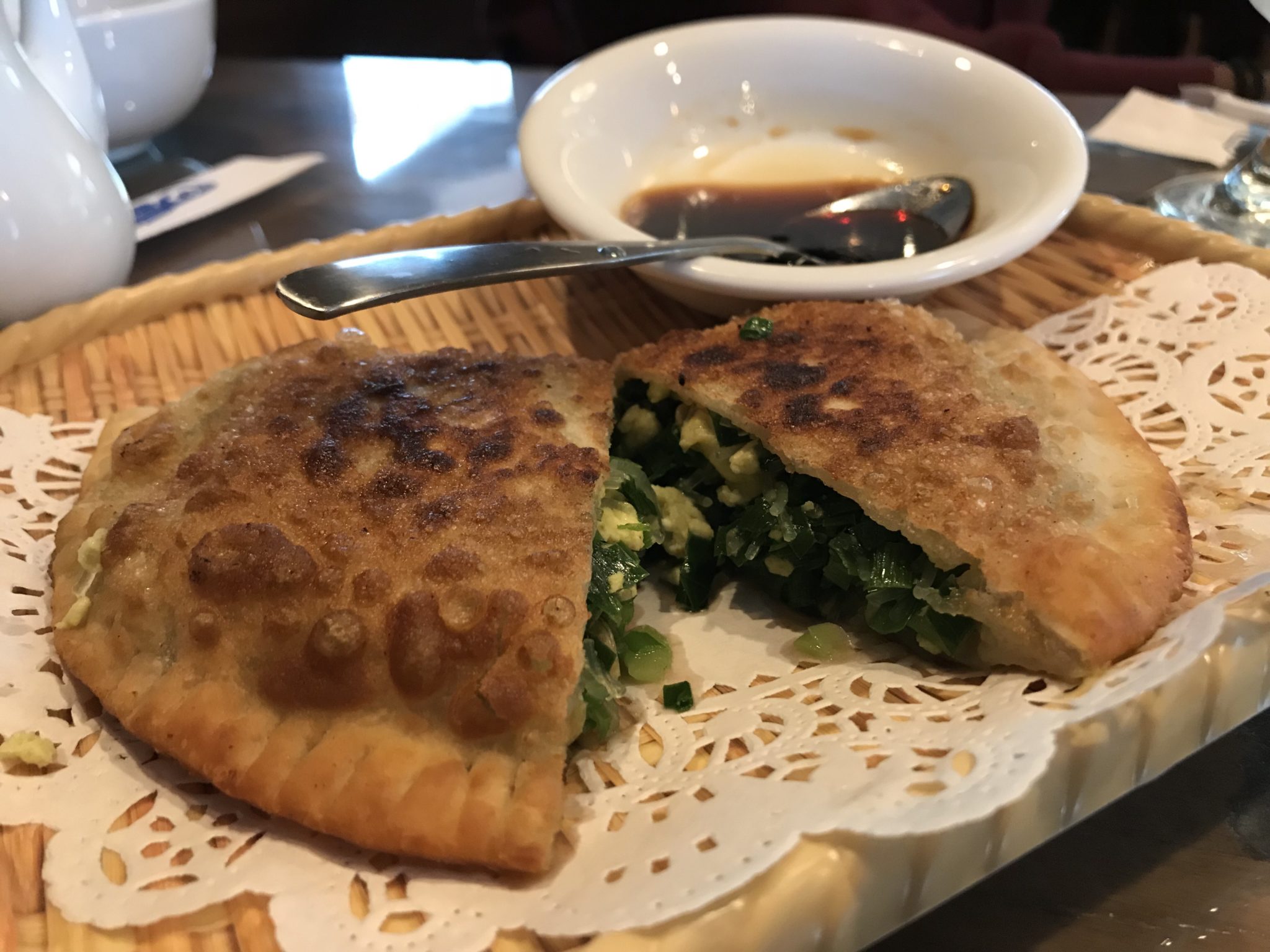
You may have heard about Steamed, a new Chinese restaurant on Whitney Avenue, across the street from the Berzelius tomb. Brandon, my co-columnist, described Steamed as brand new, and my editor believed that it was still in the stages of a soft opening.
The first thing I notice is the sense of familiarity Steamed evokes with its surroundings, as if the restaurant were as ordinary as any of the other groceries or restaurants that lie along Whitney, and what I find most fascinating about Steamed is how the restaurant straddles the lines between tradition and modern, established and new.
On top of the staircase that descends to the basement floor is a pipa surrounded by wooden blocks of Chinese characters. Along the front window counter stands a pearl-white bi disk and a rugged wooden stand holding plants and a Chinese tea set. Overall, though, the dining room strikes me as modern, with its gleaming wooden walls and wooden chairs with wavy vertical slats. According to one of the waiters, who are all casually dressed in black shirts and either black or blue jeans, the same trees that made the chairs also account for the slices of bark that are arranged around the room.
Kevin, Steamed’s manager, also explains to us that even though Steamed opened on Sept. 1, it is by no means new to the New Haven food scene. Before Steamed, the owner, Ping Hu, operated Xi’an Cuisine in this same building (before Xi’an, there was another Chinese restaurant named Chao Chao, but its origin is unknown to Kevin). As the name suggests, Xi’an featured meals typically served in central China, while Steamed focuses on food from northern China. Steamed also is not a new idea, but replaced Xi’an Cuisine due to Steamed’s success in Madison, Conn., where it opened in 2015. To top all of this restaurant experience off, Hu also owns New Haven’s Taste of China, an upscale restaurant on Chapel Street.
The waiter asks for our orders. The menu only offers Chinese cuisine and is concise, consisting of appetizers, dumplings and noodles. Instead of detailing the ingredients of each dish, the menu provides a Chinese translation. The difference between an ordinary dumpling and a soup dumpling, or what leek actually is may not be clear to a new customer; the menu best services those familiar with Chinese food or those who have a friend that is.
Brandon is my well-acquainted-with-Chinese-cuisine friend, so I do not dispute his order of two leek dumplings and a half a dozen pork and pork soup dumplings. He picks dishes that will be easy for sharing, and he also wants me to try the specialty pork soup dumpling. Validating my trust in him, a waitress approaches us once we order, confirming that we have picked the best dumplings on the menu. I appreciate the staff’s cordiality, and even more importantly the speed at which they prepared our food.
The chives and eggs within the leek dumplings are so finely cooked that I cannot distinguish their textures within my mouth, but they make their impact in hints of bitter and sweet taste. The leek dumpling’s subtlety makes it fitting for a dip or two into soy sauce, which does a nice job intensifying all the dumplings for those who appreciate very, and in this case excessively, flavorful food.
Similar to the leek, the pork and pork soup dumplings provide hints of taste, but have a lot to offer in composition. The pork dumpling dough is soft, sweet and gummy, and mixes well with its fatty and savory interior. Unlike the two other dumplings, pork soup, as the name suggests, has a broth layer in between the meat and the dough, so it is essential to eat it in one bite. And while my first dumpling was too hot to appreciate, I eventually register the dumpling’s saltiness and find the stuffing of it all into my mouth amusing.
For my second visit to Steamed, I eat downstairs. Brandon and I briefly inspected it our first time around, and I wanted to get a sense for its aesthetic. While the wood unifies the mixture of modern and traditional objects upstairs, the basement is disjointed. On one wall, there’s a realist flower painting, on the other a semi-abstract fruit bowl. The dim lighting vaguely reminds me of a bar, but bright green and red pillows on the leather benches remind me more of my living room. There are also sporadic stacks of books.
Despite the shortcomings in design, the food doesn’t disappoint. I order pork intestine sweet potato soup, which the waiter politely cautions will be very spicy (it isn’t). The intestines have a spongy texture and gamey taste that soaked in the rich flavor of the sweet potato broth. The assortment of herbs and spices that float around the bowl plugs their flavor all throughout the soup, making the rice noodles much more enjoyable to slurp.
I am excited to observe Steamed grow throughout my remaining years at Yale. Regardless of your familiarity with Chinese food or pickiness, some item on the menu should satiate you. And while the decor currently ranges from interesting to confusing, I am hopeful that with maturation the restaurant will improve upon itself and the owners will purchase better pillows. Or, more likely, Steamed will rely on its tasty cuisine and continue to host more and more students in its disorganized basement. Either way, I see Steamed becoming an esteemed restaurant in years to come.
Kofi Ansong | kofi.ansong@yale.edu







